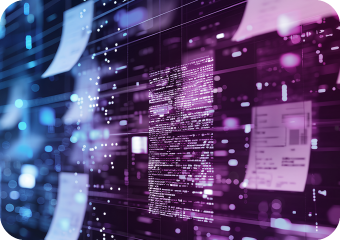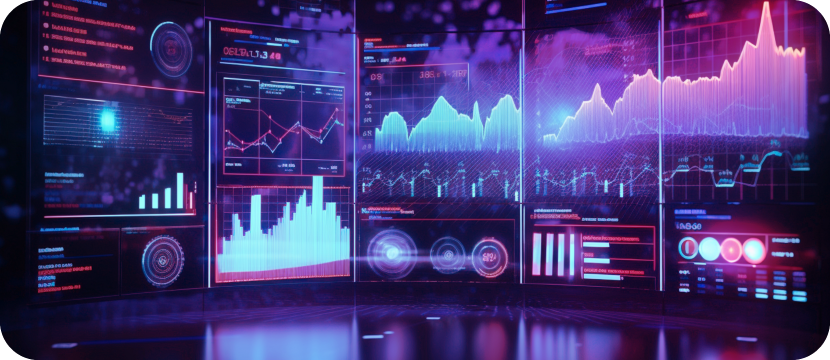

Data is crucial for enterprise success but often remains siloed and unusable. A cohesive digital transformation strategy can unlock the full potential of data, ensuring it flows seamlessly across all organizational levels and supports sustainable growth in an AI-first era. This article explores a platform-centric approach to bridge the gap between core and edge systems to unlock digital success.
“Data is the lifeblood of an enterprise.”
“Data is the new oil.”
We’ve all heard how critical data is for business success. We need those insights to make good business decisions, adapt to market changes etc., etc. So much so that companies have invested millions of dollars in collecting and storing data.
But the unfortunate reality is that this data is no good if it’s unusable – sitting in siloes or incompatible with organizational systems.
Successful enterprises know that it’s the seamless flow of data and information that makes them innovative, responsive, and competitive. And not just data from within the enterprise but also external data. In fact, according to McKinsey, companies with an externally informed mindset are more innovative and can rapidly course correct as needed.
Take Amazon, for example. It leverages a vast array of data from its customers, suppliers, and internal operations to drive decision-making. Its advanced AI and machine learning algorithms optimize inventory management, personalize customer recommendations, and improve logistics through predictive analytics. The result? A small online bookseller is now one of the most successful companies in the world.
However, connecting this data and processes and integrating the insights across workflows isn’t an easy task. Especially considering the state of IT infrastructure within enterprises.
The Great Disconnect
The tech landscape of enterprises is built on a digital core – the ERP, CRM, inventory control, and other data-centric systems that enterprise IT has focused on. While there has been some modernization, these monolithic systems remain largely self-contained and hard-coded. At the same time, business leaders looking for more agile experiences have been deploying emerging technologies on the digital edge. These include AI and automation tools that can be easily deployed and used by business users. In addition, employees themselves are bringing their own tools.
Take inventory management, for example. Core IT systems like central databases and ERP systems handle the overall inventory records—tracking product quantities, managing stock across locations, and balancing purchasing and sales. On the fringes, Edge IT technologies like IoT sensors, mobile scanners, and local data units operate in warehouses or distribution centers, providing real-time updates and tracking product movement.
What if there’s no real-time integration between these systems?
The result can be costly errors such as stock-outs or overstocking. Decisions about redistributing inventory or adjusting production schedules are made with outdated data, leading to inefficiencies. Customer service suffers due to longer wait times and fulfillment errors, damaging satisfaction and loyalty.
Edge tools and technologies isolated from the core systems that drive primary business processes have created pockets of unscalable innovation. While these innovations can enhance customer experiences, boost human capabilities, and strengthen business resilience, they have limitations. Failing to integrate across different domains and the disconnect between core systems and edge innovations can severely restrict the overall impact and value of these initiatives.

Platform Approach: A new digital transformation narrative
Data siloes resulting from digital core and edge disconnect are one of the key challenges to digital transformation. Studies show that barely a fifth of companies have seen the results they expected from digital transformation efforts.
Here’s a plan: Instead of sinking hundreds of millions into lengthy and rigid ERP system upgrades that dictate business operations for decades, why not consider a leaner, more agile approach? One that is platform-centric.
This involves distilling the ERP into components that truly support strategic goals, creating an intermediary layer to bridge core systems with applications, and customizing the ERP selectively to enhance its value.
Alternatively, starting with smaller, strategic “edge” initiatives could be the way to go. IT departments can identify and prioritize edge technologies that align with the company’s strategic aims. Focusing on these can lead to quicker wins in efficiency and scalability.
Let’s revisit the inventory management example we explored earlier. The integration of core and edge IT in this context means that the real-time insights gained at the edge (the warehouse level), like a sudden spike in demand, are seamlessly fed back into the central ERP system. The central system can then automatically adjust purchase orders and initiate a redistribution of stock from other warehouses with excess inventory to meet the increased demand efficiently.
So, where do we start?

Three Levers to Connect the Enterprise
Drawing from extensive experience in implementing digital transformations at varying levels of maturity, we’ve identified three critical areas to focus on to avoid common pitfalls and ensure successful outcomes: standardization, connectivity, and data governance. Here’s how to approach each:
-
Simplifying Complexity with Standardization:
Align various automation tools and technologies across different business units — from robotic process automation (RPA) and application programming interfaces (APIs) to script-based solutions. Without this standardization, each department might use different tools that don’t integrate well, leading to data siloes, inefficiencies, and errors. This disconnect can slow down processes, increase costs, and complicate troubleshooting and maintenance.
-
Ensuring Seamless Integration:
Connect and build an effective edge platform that bridges the gap between new technologies and existing legacy systems. Lack of connectivity means key data doesn’t get where it needs to go, slowing down decisions and causing businesses to miss out on opportunities. It also makes life harder for the teams, who end up manually moving data between systems, creating bottlenecks and potential errors.
-
Securing and Standardizing Data:
Create a unified set of rules and definitions for data management across varied systems, extending these protocols to include edge computing elements. Neglecting data governance opens the door to data breaches and legal issues. And disorganized data leads to decisions made on faulty grounds, which can seriously dent the organization’s financial health.
Loved what you read?
Get practical thought leadership articles on AI and Automation delivered to your inbox


Loved what you read?
Get practical thought leadership articles on AI and Automation delivered to your inbox
Closing the Loop with AI
Businesses today are swamped with data coming from everywhere—customer inquiries, complaints, claims, and various reports. Those who master organizing and connecting this data operate far more efficiently. But here’s where it gets exciting: AI is not just the end goal; it’s a powerful tool to help us get there.
It streamlines the connectors and APIs, making them simpler and more adaptable, which in turn enhances how we harness newer AI technologies. It takes raw data and tidies it up—identifying key entities, categorizing speech, extracting keywords, and even analyzing sentiment.
And when it comes to unifying all that data into a platform or fabric, AI steps up again. It uses data dictionaries to make sense of structured data, catalogs to enhance our understanding, and helps introduce new storage solutions like data lakehouses that redefine how we store and use data. Essentially, AI is not just part of the data journey; it drives it forward, creating a cycle where each improvement in AI enhances the system as a whole. The output of this virtuous cycle is the much-coveted straight-through processing—where everything integrates seamlessly and efficiently.
Disclaimer Any opinions, findings, and conclusions or recommendations expressed in this material are those of the author(s) and do not necessarily reflect the views of the respective institutions or funding agencies.





